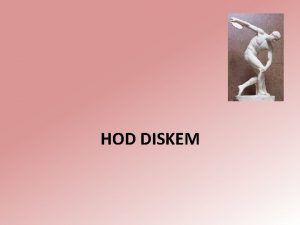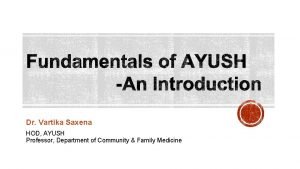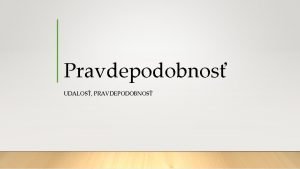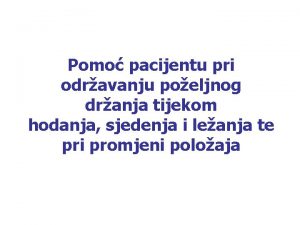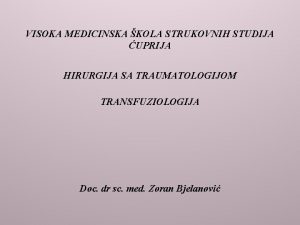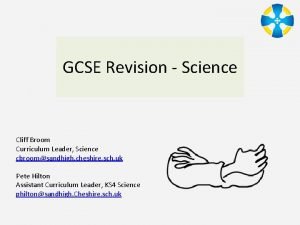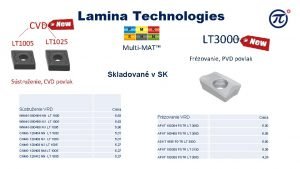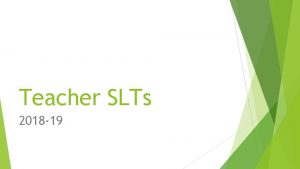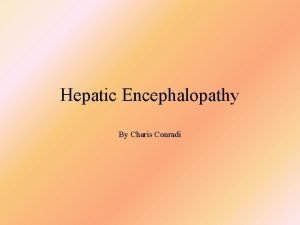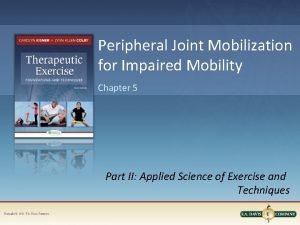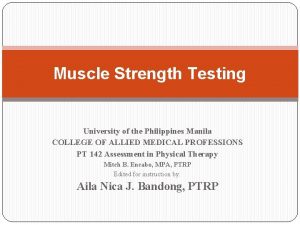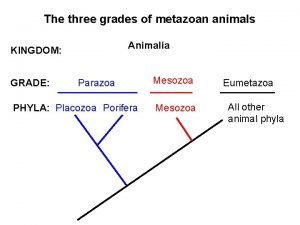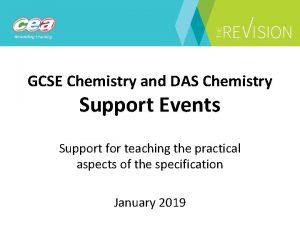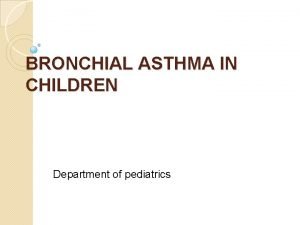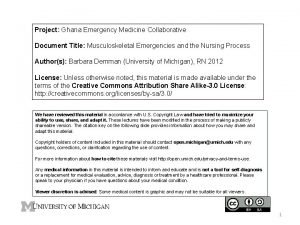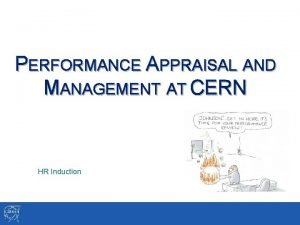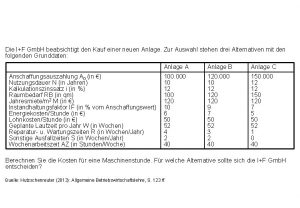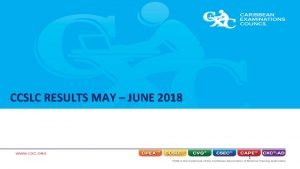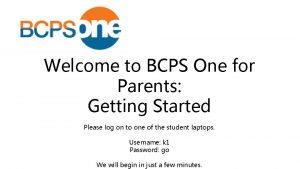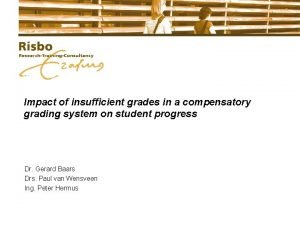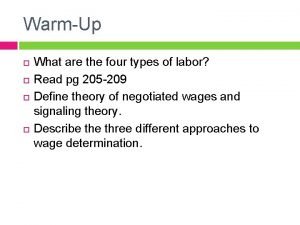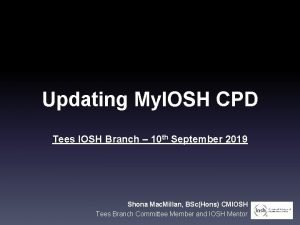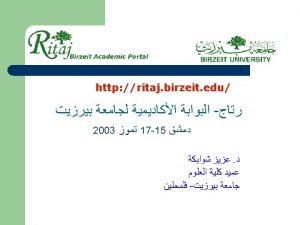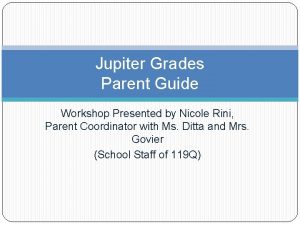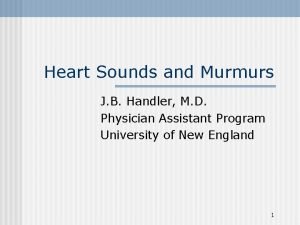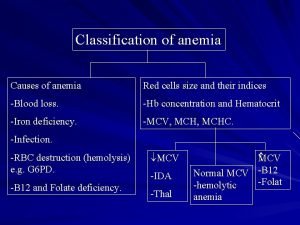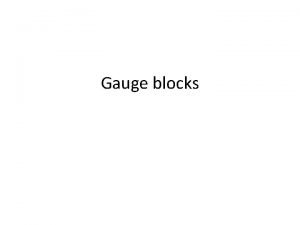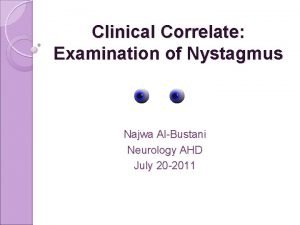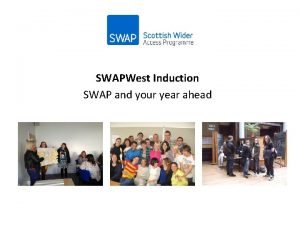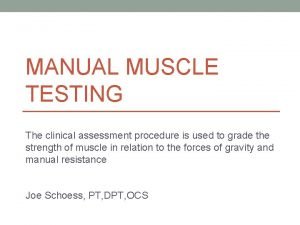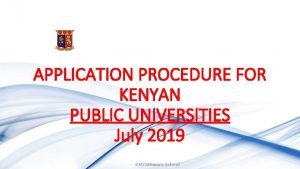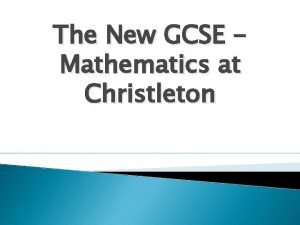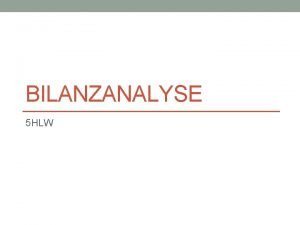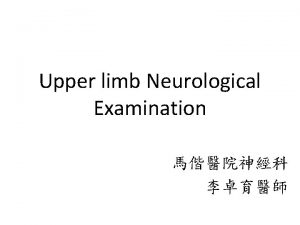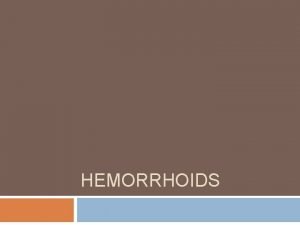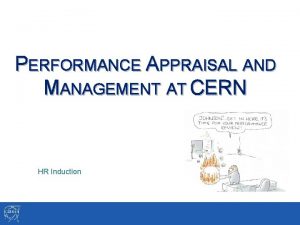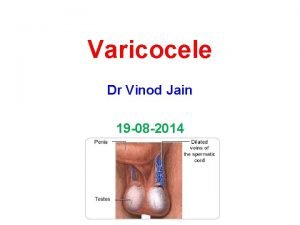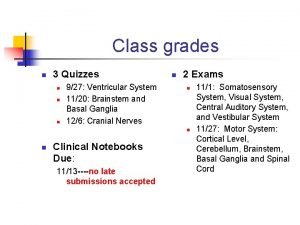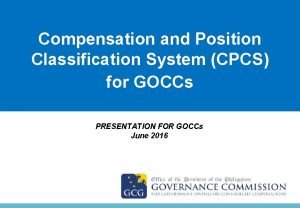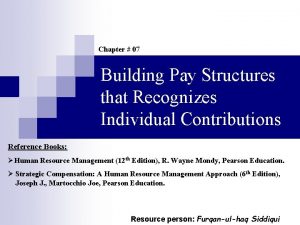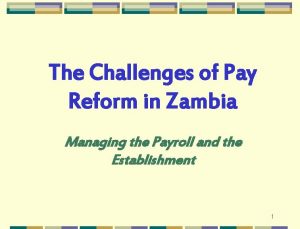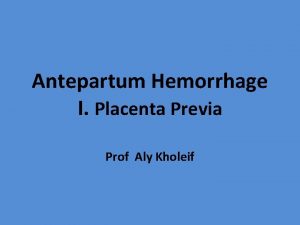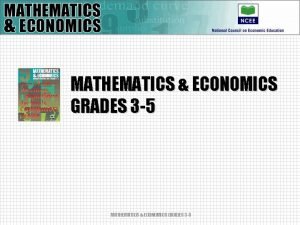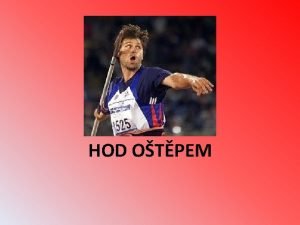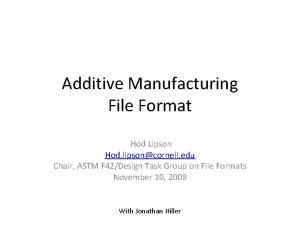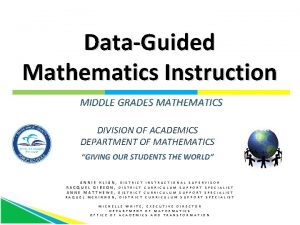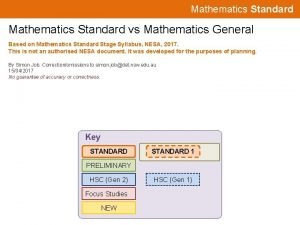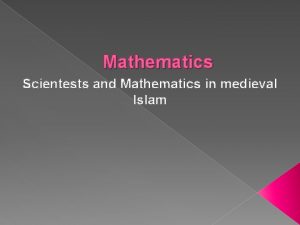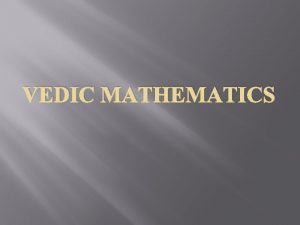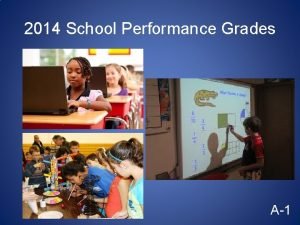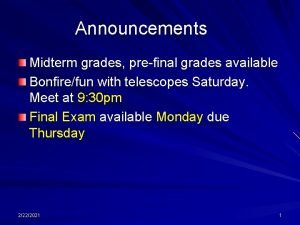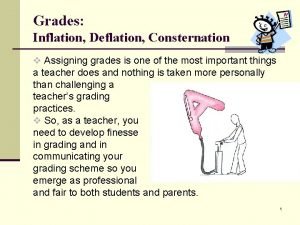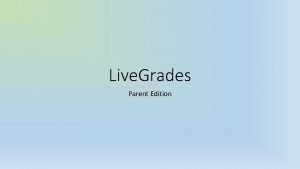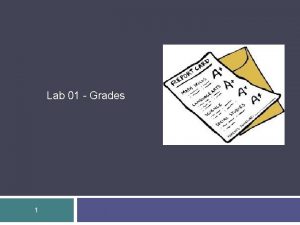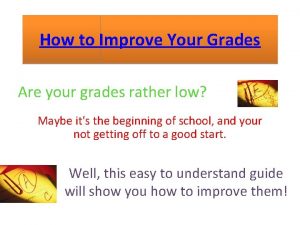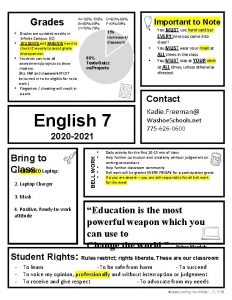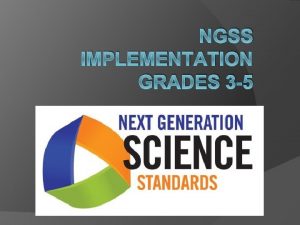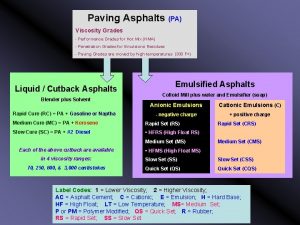MATHEMATICS HOD MEETING GRADES 4 67 17 18























































































- Slides: 87

MATHEMATICS HOD MEETING GRADES 4 -6/7 17, 18, 19 JANUARY 2017 Vision: Every learner feels valued and inspired in our innovative education system. Mission: We are committed to provide functional and modern schools that enable quality teaching and learning that protect and promote the right of every learner to quality, equitable and relevant education.

AGENDA – 17, 18, 19 JANUARY 2017 • • • • • WELCOME AND OPENING (Problem Solving Activity) ATTENDANCE HOD ROLES AND RESPONSIBILITIES MANAGEMENT OF MATHS SUBJECT DATA BASE (TEACHER PROFILE) ASSESSMENT EXTERNAL SYSTEMIC ASSESSMENT 2017 CAPS REQUIREMENTS ANNUAL TEACHING PLANS – (PROVINCIAL SCWMF & LITNUM STRATEGY) GPLMS RESOURCES PRE- AND POST-MODERATION DIAGNOSTIC AND ERROR ANALYSIS SUBJECT IMPROVEMENT PLANS – Intervention plans PLC WORKSHOPS/MEETING – Attendance, Report MATHS AND TECHNOLOGY SUBJECT SPECIFICS: ANNOUNCEMENTS QUESTIONS

Problem Solving Activity In these figures the numbers in the big circles are found by adding the numbers in the two adjacent smaller circles. Find the three missing numbers in the second diagram according to this pattern.

Question/ Activity • Solve the above problem solving activity and explain your solution?

Steps: Problem Solving: George Polya 1. Understand the problem 2. Make a plan (strategy/systematic) 3. Carry out the plan 4. Looking back

SOLUTION 1. Understand the problem • To facilitate communication, let’s call the numbers a, b and c, as shown in the diagram: • “Adjacent” implies that we must find numbers a, b and c such that • a + b = 16 • a + c = 11 • b + c = 15 2. Make a plan • We will try the guess-and-check strategy.

3. Carry • S SOLUTION CONTINUES out the plan We start by guessing a value for a: Suppose a = 10. Since a+b = 16; we find b = 6 and since b + c = 15 we find c = 9. But then a + c = 19 instead of 11 as it is supposed to be. This does not check. • Since the value of a = 10 yields a large a + c; we will reduce our guess for a: Take a = 5. As above, we find b = 11 and c = 4: This gives a + c = 9 which is closer to 11 than 19. Answer: So our next guess is a = 6: This implies that b = 10 and c = 5: Now a + c = 11 as desired. So we have solved the problem! 4. Looking • • • back Is there an easier solution? Let’s work with the information in symbol form: a + b = 16 a + c = 11 b + c = 15 A plan will be to add these three equations, giving 2 a + 2 b + 2 c = 42. Dividing by 2 we have a + b + c = 21. We also have a + b = 16, so substituting this gives, 16 + c = 21 or c = 5. Since a + c = 11 and we now know that c = 5, we have a + 5 = 11, so a = 6. Finally, since b + c = 15 and c = 5, we have b + 5 = 15, so b = 10. This was much easier, showing the advantage of introducing and manipulating symbols.

HOD management duties and responsibilities • Core function of the HOD is to support, lead and manage the curriculum of the designated subjects effectively. • To be an effective teacher of learning by example.

HOD’s Job Description (ELRC document) POLICY HANDBOOK FOR EDUCATORS – ELRC : C-66 & C-67)THE AIM OF THE JOB (HOD) To engage in class teaching, be responsible for the effective functioning of the department and organise relevant/related extra-curricular activities so as to ensure that the subject or phase and the education of the learners is promoted in a proper manner. 9

Core Functions and Duties The duties and responsibilities of the job are individual and varied, depending on the approaches and needs of the particular school, and include, but not limited to, the following: § § § Class teaching as per workload of the relevant post level Class teacher as per PAM doc. Assess and to record the attainment of learners taught. Manage a subject or phase. Develop the policy for that department. Evaluation/assessment, homework, written assignments, etc. of all the subjects in that department. 10

Extra and Co-Curricular • To be in charge of a subject or phase. • To jointly develop the policy for that department. • To co-ordinate evaluation/assessment, homework, written assignments, etc. of all the subjects in that department. 11

Guidance • on the latest ideas on approaches to the subject, method, techniques, evaluation, aids, etc. in their field, and effectively conveying these to staff members concerned. • on syllabuses(CAPS), work schedules (ATP), homework, practical work, remedial work (intervention), etc. to inexperienced staff members • on the educational welfare of learners in the department 12

Control and management of the subject mathematics • the work of educators and learners in the department • reports submitted to the Principal as required • mark sheets • test and exam papers (various forms of assess) as well as memoranda/ tools • the administrative responsibilities of staff members 13

Agenda Guidelines for Maths Meetings • • • • Welcome and Opening Absent/Apologies Scribe For The Meeting Curriculum Coverage Review and Tracking Assessment – Forms, Exam requirements Dates, Policy Requirements, Implementation, Pre and Post Moderation, et Extra Maths Co-curricular activities (Internal and External Activities/ planning) Educator support – Maths Content and didactics Control Of Educators Work Book Control, File Control, Class Visits, Moderation, Mental Maths Development ANA – Analysis of results, Analysis of papers, Subject Improvement Plan Quarterly results analysis and content gaps Impact Of promotion requirements as per CAPS criteria Intervention and Leanrner support plan, programmes and activities (evidence) 14

Agenda guidelines for an HOD cont…. . • Enrichment programme and activities. • Resources – Textbook records, DBE workbooks, Software programmes, practical material, games, posters, Internet websites, Maths videos, Technology, etc • Budget – Department and teacher resource needs • District/GPLMS Programmes and Support (Feed back from meetings/ workshops) • Affiliated Maths Institutions (Amesa, Conquesta, Mathletics, etc. . ) • Mental maths progarmme and development • Teacher preparations (Annual Teaching Plan, Lesson planning, etc)

Planning guidelines for a new HOD • Subject Allocation • Teacher Profile • Subject Plan • Management Plan • Assessment Plan (Senior Phase) • Assessment Plan (Intermediate Phase) • Moderation Tool • Pre Moderation (All Assessments) • Post Moderation (All Assessments) • Book Control • GDE Support Forms • District Control tool • Monthly Report 16

THE HOD MASTER FILE • The heart of the subject / department. • HOD is the custodian of the file. • To be kept up to date at all times. • To be accessible to all stakeholders. • SEE THE RECOMMENDED TABLE OF CONTENTS

HOD MASTER FILE: Table of Contents 1. 2. 3. 4. 5. 6. 7. 8. 9. 10. 11. 12. 13. 14. CAPS Documents NPPPPR NPA Internal School policy Subject District Memo’s Meeting Minutes Subject annual management plan HOD control records (book, file, class visits, curriculum coverage) HOD moderation reports Programme of Assessments Diagnostic Analysis, Analysis of results and assess tasks a APIP Teacher Profile General

Teacher File Contents Each educator should have the following in his/her file: 1) Time table 2) Programme of Assessment 3) Annual Teaching plan 4) Lesson Plans 5) Formal tasks per term and memo’s(advisable to set per PLC or per individual school) 6) Recording sheets (Analysis) 7) Intervention Records 8) Diagnostics Analysis and APIP 9) Minutes of meetings 10)HOD internal reports 11)SA external reports 19

HOD management plans • It is a necessary management tool. • The compass for the department. • Includes, inter alia, dates for meetings, submission dates, development sessions dates, control dates, dates for important events at school, e. g. Maths week, dates for workshops, induction meeting dates, reporting dates and dates of all events in Mathematics for the year. • Dates have to be adhered to, otherwise the plan loses its purpose. • Give the deputy principal and teachers copies.

Data Base (Teacher Profile) • HOD must have a profile of all teachers within his/ her department. ( updated in the master file) • The profile should include the teacher name, grades and subjects currently teaching, number of years experience in each subject and qualifications. (Confidentiality) • Copy of the profile to be sent to the District office annually. Do not rotate teachers from subject too often(Stability is important

Assessment Analysis • Analysis framework • Cognitive Levels • Item Analysis • Diagnostics Analysis • APIP 22

Cognitive levels Knowledge (≈25%) • Estimation and appropriate rounding of numbers • Straight recall • Identification and direct use of correct formula • Use of mathematical facts • Appropriate use of mathematical vocabulary • Estimate the answer and then calculate with a calculator 23

Cognitive levels Routine procedures (≈45%) • Perform well-known procedures • Simple applications and calculations which might involve many steps • Derivation from given information may be involved • Identification and use (after changing the subject) of correct formula • Generally similar to those encountered in class (routine) 24

Cognitive levels Complex procedures (≈20%) • Problems involving complex calculations and/or higher order reasoning • Investigate elementary axioms to generalize them into proofs for straight line geometry, congruence and similarity • No obvious route to the solution • Problems not necessarily based on real world contexts • Making significant connections between different representations 25 • Require conceptual understanding

Cognitive levels Complex procedures (≈20%) • Problems involving complex calculations and/or higher order reasoning • Investigate elementary axioms to generalize them into proofs for straight line geometry, congruence and similarity • No obvious route to the solution • Problems not necessarily based on real world contexts • Making significant connections between different representations 26 • Require conceptual understanding

Cognitive levels Problem solving (≈10%) • Unseen, non-routine problems (which are not necessarily difficult) • Higher order understanding and processes are often involved • Might require the ability to break the problem down into its constituent parts • Apply logic and reasoning to solve the problem 27

Cognitive levels Cognitive Levels Description of skills to be Demonstrated Example Knowledge (≈ 25%) • Knowing • Remember • Recall Determine the factors of 64 Routine Procedures (≈ 45%) • Applying routine procedures in a familiar context. • Understand Calculate: 1 158 + 3 107 Complex Procedures (≈ 20%) Peggy is 4 years old and • Applying multistep procedures in a variety of Jack is 8 years old. Determine the ratio contexts Problem Solving between. Write the ratio in the simplest fraction form. 28 • Reasoning and Reflecting The sum of three whole consecutive numbers is

Cognitive Levels LEVEL Descriptors % Qu 1. 1 1. 2 1. 3 1. 2 Qu 2. 1. 1 2. 1. 2 2. 3. 1 2. 3. 2 2. 3. 3 2. 3. 4 3. 1 3. 2 3. 3 3. 4. 1 3. 4. 2 3. 5. 1 3. 5. 2 3. 5. 3 TOTAL(S) 1 2 3 4 Knowledge 25 1 2 2 2 1 Routine 45 3 2 3 3 4 1 1 Complex 20 5 4 2 2 2 Problem Solving 10 5 5 8 16% 17 34% 15 30% 10 20% 29

Activity: Skills development • In pairs/ groups: • Analyse the GPLMS Nov 2014 exam paper • Complete the Cognitive level analysis sheet with totals • Complete the content area analysis with totals • Feedback; • Comment on the cognitive level and content area alignment to the CAPS (Is the paper aligned to CAPS? What are the gaps/ challenges? ) • How can the exam paper be improved? 30

Provincial Common Exams There will be a common grade 6 and 9 exam for June and November 2017 31

ANA 2017 • • • “Hearsay” – to be negotiated as follows: Renamed as systemic evaluation Grades 3, 6 and 9 Added as a task with a minimum weighting. Unsure when it will be administered and scope coverage.

How to correct these misconceptions AIM: BACK TO BASICS ! Levels Of Planning q SECTION 1: Annual Teaching Plan SECTION 2: Content Specification q SECTION 3: Content Clarification q SECTION 4: Lesson Planning q SECTION 5: Assessment (NPA , NPRR) q (Maths CAPS policy review and amendments not included in the DBE draft amendments) 33

CAPS Policy Review • • • Subject: COMMENT ON DRAFT DOCUMENT: MATHEMATICS INTERMEDIATE AND SENIOR PHASE Dear Simon Please note the following with regards to the above document sent to us from the DBE office: Mathematics Intermediate and Senior phase amendments are not included in the above document. The District Tshwane South Mathematics Subject advisors make the following recommendations to Province and National office with regards to amendments to the Mathematics CAPS for Grades 4 -9 School Based Assessment (SBA) tasks weighting for each assessment task. Province has given us a verbal instruction to implement equal weighting for each assessment task, however we do not have a directive in writing from the Provincial and/ or National office. Weighting of topics - Number of hours for some topics is a challenge for teachers that are implementing the CAPS. Need for a review Curriculum overload of the Mathematics CAPS with respect to number of topics to cover throughout the year, time allocation per topic and term 4 being a short term of 4 -5 weeks of curriculum coverage due to exam processes. We request that the above mentioned recommendations be reviewed by the Province and

Weighting Of Content Areas Content Area Grade 4 Grade 5 Grade 6 Numbers, Operations and Relationships* 50% 50% Patterns, Functions and Algebra 10% 10% Space and Shape (Geometry) 15% 15% Measurement 15% 15% Data handling 10% 10% 100% The weighting of Number, Operations and Relationships has been increased to 50% for all three grades. This is an attempt to ensure that learners are sufficiently numerate when they enter the Senior Phase. 35

Weighting Of Content Areas: Gr 7 -9 Weighting Content Area Grade 7 Numbers, Operations and Relationships* 30% Grade 8 Grade 9 25% 15% Patterns, Functions and Algebra 25% 30% 35% Space and Shape (Geometry) 25% 30% Measurement 10% 10% Data handling 10% 10% 100% 36

Minimum Requirements for Formal Assessments: (I. P) Forms Of Number Term Ter assessment of Tasks 1 2 m 3 per Year SBA Tests 3 Examination s 1 Assignments 2 Investigation s 1 Project 1 Total 8 1 1 Term Weighti 4 ng 1 1 75% 1 1 2 2 To be completed before the final examination at the end of the year Final Exams 37 1 End of The Year 25%

Minimum Requirement for Formal Assessments Senior Phase 38

Minimum Requirement for Formal Assessments Senior Phase Tests and Examinations are individualised assessment tasks and should be carefully designed to ensure that learners demonstrate their full potential in Mathematics content. The questions should be carefully spread to cater for different cognitive levels of learners. Tests and examinations are predominantly assessed using a memorandum. The assignment, as is the case with tests and examinations, is mainly an individualised task. It can be a collection of past questions, but should focus on more demanding work as any resource material can be used, which is not the case in a task that is done in class under supervision. 39

Minimum Requirement for Formal Assessments Senior Phase Projects are used to assess a range of skills and competencies. Through projects, learners are able to demonstrate their understanding of different Mathematics concepts and apply them in real-life situations. Caution should, how- ever, be exercised not to give projects that are above learners’ cognitive levels. The assessment criteria should be clearly indicated on the project specification and should focus on the Mathematics involved and not on duplicated pictures and facts copied from reference material. Good projects contain the collection and display of real data, followed by deductions that can be substantiated. 40

• Investigation promotes critical and creative thinking. It can be used to discover rules or concepts and may involve inductive reasoning, identifying or testing patterns or relationships, drawing conclusions, and establishing general trends. To avoid having to assess work which is copied without understanding, it is recommended that whilst initial investigation could be done at home, the final write-up should be done in class, under supervision, without access to any notes. Investigations are assessed with rubrics, which can be specific to the task, or generic, listing the number of marks awarded for each skill

Purpose of ATP meeting • Encourage HOD’s to conduct PLG meetings at the beginning of each term with the main focus on planning and implementation of the CAPS, GPLMS ATP with constructive discussions regarding: 1. Content to cover (achievements & challenges (previous terms) 2. Progression of content (achievements and challenges) 3. Sharing of good practices (methodology, assessments, resources) 4. Educator concerns regarding ATP policy issues to be raised formally and taken to the next level 5. Expectations of HOD regarding management and implementation of ATP and control as well as identify areas of support

What is an Annual Teaching Plan? • Roadmap – Gives the teachers direction in the teaching of the Maths curriculum for the term and year. (What, When, Time) • The CAPS ATP includes topics per term and no. of hrs per topic, revision time, assessment, Mental Maths (No sub topics/ concepts and skills are given) • No of weeks per term – Gr 4 - 6 (10 wks x 6 hrs per week = 60 hrs of work per term)

Time Allocation per Topic 44

MATHS ATP GRADE 6

Maths Grade 6 ATP (Sample of a school)

GPLMS ATP: Maths Grade 6

Annual Teaching Plan (Grades 4 -7) • • • Various ATP’s that are available: CAPS ATP from policy GPLMS teaching plan (include sub topics and days) Textbook developed teaching plan (eg. Platinum) LITNUM strategy (Gr 4 -7) • Progression of content (Grades 4 -7) – Content specification • 3 aspects of curriculum coverage ( cover topic, depth of topic and practice opportunities) • Realistic dates and time frames

System Wide Curriculum and Management SWSIS Strategy – Curriculum Implementation, Monitoring and Support. 1. SWCMF – Systems Wide Curriculum and Management Framework 2. WSI – Whole School Functionality and Improvement 3. LITNUM Strategy – Languages and Mathematics provincial ATP implementation SWCMF: To strengthen management and control systems Who? and Why? Process outline (Quarterly cycles) Focus on ATP coverage and SBA coverage ( Regular check on learner books to evaluate)

WHY THE NEED FOR THE STRATEGY & FRAMEWORK Observed and documented ( Review of Curriculum Task Team ) that syllabus coverage and school based assessment prescribed for the year is not being completed. • The model allows the following: 1. Picks up at the particular points in the year in a verified fashion whether the syllabus is being covered and assessment is being done 2. Early intervention – within the 1 st six week s 3. Ensures that by the time learners sit for exams – teachers have completed the required work. The syllabus has been covered and most importantly learners have learnt

WHY THE NEED FOR THE STRATEGY & FRAMEWORK (cont. ) 4. Reduces dysfunctional imbalances of departments within a school (in a situation where there are 5 departments – processes are standardized ) 5. Identifies the functionality of schools - 9 areas/dimensions of functionality (External Whole School Evaluation) - conflict between Leadership and Management vs Governance affects teaching and learning (it serves as an entry point) 6. Ensures maximum attendance of educators and learners. 7. It clarifies the role of the School Management Team with regards to the management of curriculum ( system and related processes) (see SWCMF) SMT : Head of Departments/ Deputy and Principal

CURRICULUM MANAGEMENT FRAMEWORK Cycle 1 Jan –Feb (5 weeks ) Term 1 1 st Date 27 Jan 2017 Teacher to HOD 2 nd Date 03 Feb 2017 HOD to Deputy Principal 3 rd Date 10 Feb 2017 Deputy Principal to Principal 1 st Date 24 Feb 2017 Cycle 2 Feb –March (5 weeks) Teacher to HOD 2 nd Date 03 Mar 2017 HOD to Deputy Principal 3 rd Date Deputy Principal to Principal 10 Mar 2017

CURRICULUM MANAGEMENT FRAMEWORK 2016 2017 Term 1 2017 Term 2 2017 Term 3 2017 Term 4 11 weeks 10 weeks 9 weeks 56 days 55 Days 53 days 43 Days Dates 1 Teachers to HOD Cycle 15 weeks Cycle 3 Cycle 5 6 weeks Cycle 4 Cycle 6 Cycle 7 5 weeks 2 HOD to Dep Principal 3 Dep Principal to Principal Cycle 2 5 weeks 6 weeks 5 weeks 24 dates for the 8 cycles N. B Identify 3 dates for submission , • monitoring, support and development for each cycle to each manager Cycle 8 4 Weeks • • Effective Curriculum delivery Quality Teaching and Learning Good Learner Performance (Results)

LITNUM STRATEGY SAMPLE OF PROV ATP

LITNUM STRATEGY: SAMPLE OF PROV ATP

Challenges with implementation of the ATP 1. Time constraints - some topics take a longer time to complete. (Back log of term 1 and 2 curriculum) 2. Learners are not on the expected grade level (poor foundation impacts leaner pace) 3. Term 4 short term, Curriculum is over packed, etc… 4. Effective use of time in the classroom 5. School activities- (eg. term 1 athletics) 6. Insufficient practice – learners don’t do homework 7. Poor Mental Maths – Time management during class time 8. Poor/ incorrect content and methodologies used by the teacher 9. Lack of CRA approach – teaching on an abstract level 10. No informal/ continuous assessments

Activity: Discussion • Suggest strategies to cover up backlog of curriculum when a teacher has fallen behind with term 1 and 2 coverage due to various factors? (learner pace, school activities, etc…) • How do you manage the time constraints in order to cover the Term 4 curriculum coverage within 4/5 weeks?

Suggested strategies To Resolve Challenges • Identify simple and difficult topics (time management) • Interlinking of some topics to save time • Cover some of the term 4 topics during Term 1 -3 • Set up homework class structures at school for practice • Regular monitoring and support by HOD in terms of curriculum coverage (Monthly reporting system) • Catch up programme – Extra Classes after school

Cont…Sample of a GPLMS Lesson Plan

GPLMS Lesson Plan Cont. .

GPLMS Lesson plan template

GPLMS Lesson plan template cont…

Classroom Delivery (Lesson Plan and ATP) • Step 1: Mental Maths/ Ana (10 minutes) • Step 2: Review and Corrections ( 10 min) • Step 3: RPK and Introduce new content (20 min) • Concept - definition, concrete methods, examples, check application, assess success of lesson (informal) • Step 4: Classroom activity (15 min) • Step 5: Homework (5 min) • Step 6: Enrichment and Support (Amesa/Ana past questions) NB: Constructive use of time in class results in quality teaching and learning.

Management of ATP and Implementation • Monitor ATP in HOD & teacher file – monitor insert dates and subtopics with time frames (teacher file) – evidence of planning • Book control – monitor alignment to ATP • Class visits: (correct tool used to monitor lesson delivery) monitor alignment to ATP • Monitor lesson plan implementation (structure) • Monitor teachers content knowledge, methodology used, test learners basic maths skills and reading skills with constructive developmental comments/ feedback • Assessments – Formal and Informal aligned to ATP & books • Tracking of curriculum – system (monthly report) • New tracking system – DDG expectation (25%, 50%, 75%, 100%

GPLMS Programmes (Grade 4 -7) Gauteng Primary Language and Mathematics Strategy (GPLMS) § Schools have received lesson plans that include assessment activities, marking guides and recording tools. § The lesson plans integrate the content and assessment required by CAPS into a structured, day by day programme. 65

GPLMS Programmes (Grade 4 -7) § The assessment activities in the lesson plans include formal and informal assessment § In order to manage the pacing of the Lesson Plans, and to lessen teacher workload, teachers are supported with clear time allocations, weekly routines, revision weeks and marking guidance.

GPLMS Programmes (Grade 4 -7) Head of Department (HOD) The HOD of the GPLMS school has the responsibility to support teachers to: § implement the lesson plans and assessment tasks. § record and report in line with the requirements of the policy § manage assessment administration

Pre Moderation • • • Assess Tasks: Quality assure the following: Exam framework (standard of assessment) Alignment to policy (form, content, cognitive levels) Fair, valid, reliable (Alignment to AAPS) Language structure of questions Clarity of diagrams, graphs, pictures, tables Neatness and layout (typing) Scaffolding, No errors on paper Allow for different types of questions Mark allocation and time to complete and assess task. Memorandum correctness, mark allocations, ticks, CA mark Moderate on draft exam paper and complete a pre

Pre moderation template (before administration)

Post moderation HOD/ Subj. head to quality assure the following: • Moderate 10% of scripts • Marking process is done according to memo. • CA marking applied • Check mark sheets (capturing of marks) • Diagnostic/ item analysis • Results analysis (level ratings 1 -7 and average) • Moderate on scripts and complete a feedback report

Post moderation template (moderation after admin)

External level moderation process • Provincial Instruction – No circuit/ cluster level moderation • Assessment unit will address this issue with schools. • Always be prepared for an external moderation.

Diagnostic / Item and Error Analysis • Purpose of a diagnostic analysis (identify strengths/ weaknesses). • General Diagnostic analysis must be done for all assess tasks that are not exams (eg. Tests, assignments) • Diagnostic analysis templates should include the tasks details, quantitative results, strengths, weaknesses, misconceptions, errors and intervention. (HOD and teacher sign) • Questions/ Item analysis is a more detailed analysis preferably done with all learners question by question. 30% sampling across a grade of good, average and poor performing learners may also be done.

Results analysis • To be done at end of each term by the HOD. • For each class and for each grade. • Number of learners per level to be indicated, e. g. • Grade 6 A Term 1 2015 • Roll=40 • Level 1= 15 Level 2= 16 • Level 3= 20 Level 4= 12 • Level 5 – 7, etc • Average = 25% • Quarterly Results Stat’s to be updated and sent to the District timeously. • Results analysis to inform Subject Improvement Plans

Subject Improvement Plans (APIPS) • Schools to use item and diagnostic analysis of assessment tasks as well as daily observance of learner challenges to develop an Academic Performance Improvement Plan (APIP). • It is compulsory for schools with poor performance in a subject to compile an APIP. • All schools are advised to complete an APIP ( Eg. Improve 60% average to 70% average) • Targets must be realistic and achievable. APIP to be signed as an agreement by Maths department. • Implementation must be monitored by the HOD and report on progress.

Academic performance Improvement Plan 1. Particulars of the school 2. Set targets for teacher and for the grade (learner group) 3. History of ANA/ School results – General Comment 4. Contextual factors: Improvement strategies 5. General and specific Mathematics content and methodology challenges with improvement strategies 6. Control measures and progress reports 7. Signed and agreed upon

SUBJECT MONTHLY, QUARTERLY & ANNUAL REPORTS • A requirement according to the job description. • Also a medium for reflection. • Recommended format: KEY AREAS Curriculum coverage SBA Coverage Learner at risk (Intervention) CHALLENGES ACHIEVEMENTS/ INTERVENTION PROGRESS

PLC Workshops and Meetings • The HOD has to try to attend all workshops organized by the Subject Advisor for the teachers. • How can the HOD lead and manage teachers who are more informed than him/her? • This also ensures full compliance by all, eliminates unnecessary discrepancies and conflicts and ensures uniformity at all times. • HOD to get feedback from teachers that attend workshops/ meetings or organize a feedback session meeting with the subject teachers for all grades.

Math's and technology § Use of Smart Boards § www. aloelearningcentre. co. za § Aplus. Math – www. aplusmath. com § Math. TV – Math. TV. com § AAA Math § Maths Frame

Maths and Technology • Tools: Cell phones, IPADS, tablets, computers, SMARTBOARD. • Good news: Website address: https: //mathsts. co. za • • • You tube Maths groups using twitter or creating groups. Video record your own teaching sessions. www. khanacademy. co. za www. mathsbuddy. co. za info@olympiad. org. za www. coolmaths 4 kids. com (online lessons, games, act) www. mathletics. co. za https: //www. matholia. com/za (practice, learn and play) https: za. ixl. com (online maths and english practice)

Maths and Technology cont… • www. sparklebox. co. uk • www. e-classroom. co. za • www. homeschoolmath. net • www. mathsworksheet 4 kids. com • www. k 5 learning. com • www. curriculumsupport. eduaction. nsw. gov. au (Count me in too) Movable Fractions Wall • www. superteacherworksheets. com • Assessments: • www. teacher 911. co. za – small fee charged • Please check for CAPS compliance.

Workbooks § § Sasol Inzalo workbooks DBE workbooks Lesson Plans ATP 82

Announcements: Opportunities 1. Maths Olympiad 2017 2. Maths Road Shows 3. Maths Week 4. Maths Sci-Bono trainings (Memo 06/ and 07/17) 5. Maths Af. L training 6. Maths Problem Solving w/shops (annually) 7. Maths Univ. Of PTA w/shops (one per term) 7. Maths Provincial June and November Exams - Prepare 8. Maths baseline assessments (2017 Gr 3 -8) 9. https: //www. mathsts. co. za 10. ANA 2017 to confirm 11. World Maths Day – 12 March 2017 (Sunday) 12. Regina White (UP) Maths workshops Circuit 4&5 – 7 th March 2017: Univ Of PTA (Gr 7 -9) Circuit 2 – 14 th March 2017: Simon Bekker (Gr 4 -6)

Announcements: 2017 • PLC leaders meeting – 30 January 2017 • Mid year Provincial exams : 01 -23 June 2017 • End of year Provincial exams: 06 -30 Nov 2017 • DBE workbook memo: www. sateachershop. co. za/ www. sateacher. co. za • National Maths Day – 12 March 2017 • AMESA – Round 1 (9 -13 May) Final 2 (27 July 15) • District Maths Olympiad – Term 3 of 2017 • Maths Week - August 2017 (to confirm) • Circuit 2, 4 and 5 – Regina White (UP) weekly content workshops • Profile of the Mathematics department

Closing: Motivational Quote • Be the type of person that no matter where you go or where you are, you always add value to the lives of those around you” Think, Grow, Prosper

THANK YOU Questions

CONTACT DETAILS OF FACILITATORS • • • Cynthia Hlope - 083 568 6031 Cynthia. Hlope@gauteng. gov. za Dayson Maringa – 073 210 3900 Dayson. Maringa@gauteng. gov. za Suliman Motala – 082 736 2068 Suliman. Motala@gauteng. gov. za
 Neonatal sepsis
Neonatal sepsis Pam document for hod
Pam document for hod Světový rekord hod diskem
Světový rekord hod diskem Hod mincou
Hod mincou Siafihod
Siafihod Mantra hod
Mantra hod Hod mincou
Hod mincou Hod responsibilities
Hod responsibilities Pansitopenia adalah
Pansitopenia adalah Pijetlov hod
Pijetlov hod Le fort prelomi
Le fort prelomi Proposal kickoff meeting agenda
Proposal kickoff meeting agenda What is meeting and types of meeting
What is meeting and types of meeting Types of meeting
Types of meeting For today's meeting
For today's meeting Combined science gcse grades
Combined science gcse grades Lamina yverdon
Lamina yverdon Slts grades
Slts grades Hepatic encephalopathy staging
Hepatic encephalopathy staging Lea islam
Lea islam Human resources in asia
Human resources in asia Grades of mobilization ppt
Grades of mobilization ppt Accessory joint motion
Accessory joint motion Facial muscle mmt grading
Facial muscle mmt grading Adolphus elementary
Adolphus elementary Ocelli
Ocelli Gcse grades
Gcse grades Pef in asthma
Pef in asthma Government job pay grades
Government job pay grades Panecales
Panecales Cern salary grades
Cern salary grades Liquidität 2 grades
Liquidität 2 grades Ccslc grades
Ccslc grades Bcps one students
Bcps one students Insufficient grade
Insufficient grade Explain the importance of noncompeting labor grades
Explain the importance of noncompeting labor grades Iosh membership grades
Iosh membership grades Cutability
Cutability Portal grades
Portal grades Jupiter grades sign up
Jupiter grades sign up Mercer pay grades
Mercer pay grades Matc grades
Matc grades Aub gpa system
Aub gpa system How do pay grades work
How do pay grades work Murmur intensity grading
Murmur intensity grading Grades of anemia
Grades of anemia Eku midterm grades
Eku midterm grades Types of slip gauges
Types of slip gauges Jerk nystagmus
Jerk nystagmus Swapwest
Swapwest Nyha dyspnea scale
Nyha dyspnea scale Joey's first 14 quiz grades in a marking period were
Joey's first 14 quiz grades in a marking period were Hsed vs ged
Hsed vs ged Cambridge grades
Cambridge grades Laryngoscopy view grades
Laryngoscopy view grades Robert lovett and wilhelmina wright
Robert lovett and wilhelmina wright 2019 kcse grading system
2019 kcse grading system Https://vle.mathswatch.co.uk/vle/
Https://vle.mathswatch.co.uk/vle/ Egg grading canada
Egg grading canada Kurzfristige verbindlichkeiten
Kurzfristige verbindlichkeiten Dyspnea grading
Dyspnea grading Joint play grading
Joint play grading Milk grade
Milk grade Muscle power neurological examination
Muscle power neurological examination Fever in toddler
Fever in toddler Hemorrhoid banding procedure
Hemorrhoid banding procedure Jlr salary grades
Jlr salary grades Brain tumor grades
Brain tumor grades Conduct grades chart
Conduct grades chart Cern salary grades
Cern salary grades Grade and section
Grade and section Child development gcse grades
Child development gcse grades Epso grades
Epso grades Laryngoscopy view grades
Laryngoscopy view grades Grades of varicocele
Grades of varicocele Clubbing grades
Clubbing grades History ia grade boundaries
History ia grade boundaries Italy school system
Italy school system Nerd vs gerd
Nerd vs gerd Nnn grades
Nnn grades Mydrasis
Mydrasis Cpcs gcg
Cpcs gcg Merit pay grid example
Merit pay grid example Varicocele grades
Varicocele grades Zra salary grades
Zra salary grades Manual muscle testing
Manual muscle testing Beefsex
Beefsex Plasenta previa lateralis
Plasenta previa lateralis


